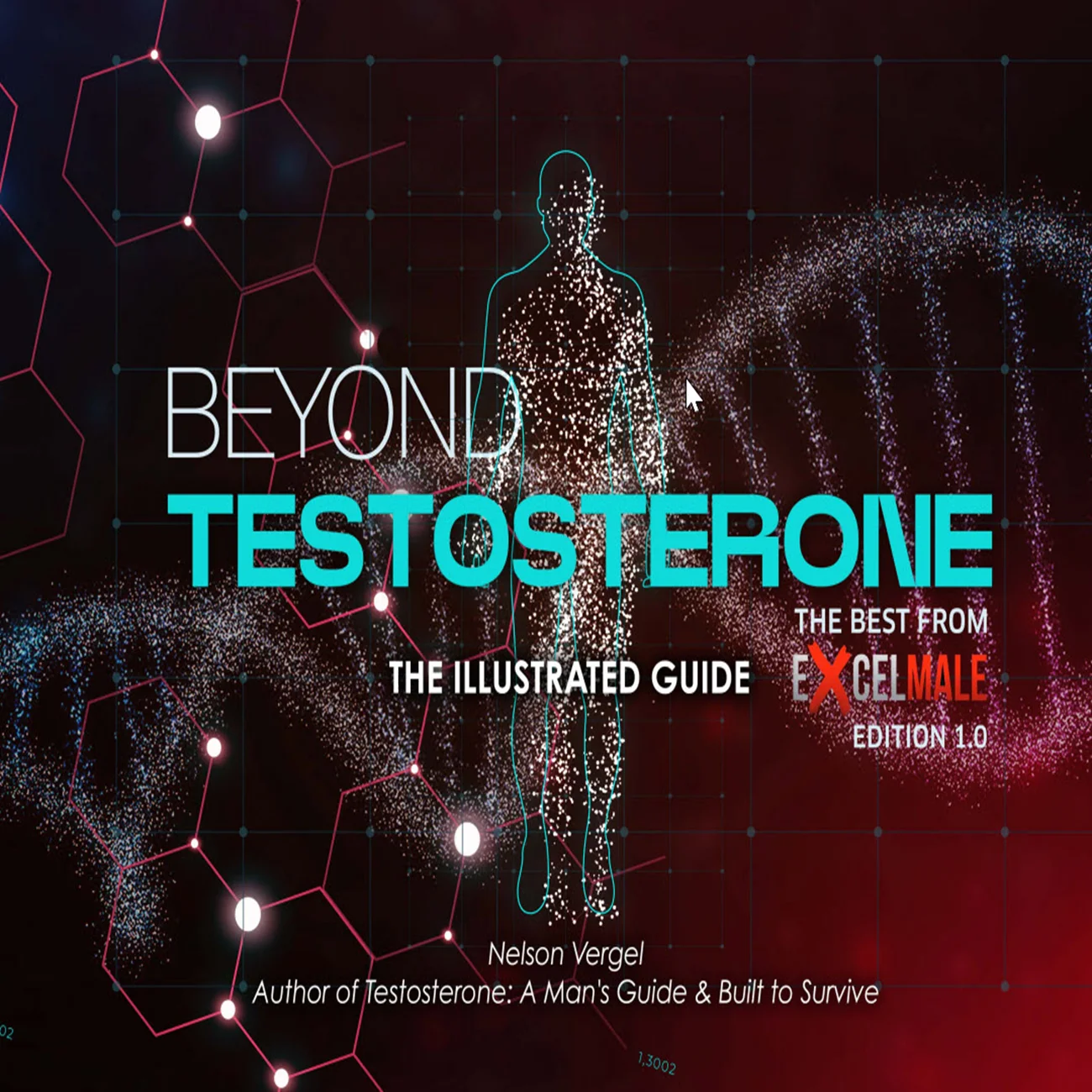In this episode, titled "From investigation to resolution. Tackling advanced erectile dysfunction (ED)", experts Dr. R. Rees (GB) and Dr. V. Sahdev (GB) will take you through a thorough exploration of diagnostic techniques and cutting-edge treatment options. They will examine the underlying causes of advanced ED, ranging from physiological to psychological factors, and discuss the latest advancements in pharmacological treatments, surgical interventions, and lifestyle modifications.
Advanced Erectile Dysfunction: Investigation and Treatment Options
A Clinical Discussion with Dr. Roland Reese and Dr. Venu Sadevan
Consultant Urological Surgeons and Andrologists, University of Southampton, United Kingdom
Erectile dysfunction (ED) affects millions of men worldwide, and while first-line treatments are often managed in primary care, more complex cases require specialized investigation and treatment. In this comprehensive discussion, two leading andrologists explore the modern approach to managing advanced erectile dysfunction.
When to Investigate Beyond Basic Testing
Primary care physicians typically begin with fundamental investigations including glucose levels to screen for diabetes, testosterone measurements, and lipid profiles. However, patients referred to specialist andrology clinics often present with more complex cases—those who have failed oral medications and require more advanced interventions.
"We don't often see patients at the beginning of the pathway," explains Dr. Reese. "We're seeing patients who've failed pills and are coming to the andrology clinic for further management."
The key consideration is whether additional testing will actually change management decisions. For most patients with ED, extensive investigations aren't necessary, as treatment options remain relatively standard. However, certain situations warrant specialized testing:
Cases Requiring Specialized Investigation
Primary Erectile Dysfunction: Men who have never achieved an erection since puberty require thorough evaluation.
Young Patients with Trauma History: Those with previous pelvic or perineal trauma may have underlying vascular issues that need assessment.
Penile Deformities: Patients with Peyronie's disease or post-traumatic deformity may benefit from MRI to assess the degree of scarring.
Complex Endocrine Disorders: Abnormal testosterone levels or suspected endocrine pathology require further hormonal investigation.
Psychiatric and Psychosexual Issues: Some patients may need nocturnal penile tumescence (NPT) testing or psychological assessment.
Cardiovascular Considerations: According to Princeton guidelines, patients with cardiovascular disease require assessment to determine if their condition is stable before ED treatment can proceed.
Treatment Options Beyond Oral Medications
When PDE5 inhibitors (such as Viagra, Cialis, or Levitra) fail, patients and their physicians may feel uncertain about next steps. However, multiple effective options exist.
Second-Line Treatments
Vacuum Erection Devices: Non-invasive devices that use negative pressure to draw blood into the penis, maintained with constriction rings.
Intracavernosal Injection Therapy: Direct injection of vasoactive medications into the penis to produce an erection.
Intraurethral Alprostadil (MUSE): Suppositories inserted into the urethra, though effectiveness is limited, particularly in patients who haven't responded to oral medications.
Topical Alprostadil Gel: Generally not particularly effective when oral medications have already failed.
The Paradigm Shift: Early Discussion of Penile Prosthesis
Traditionally, penile prosthesis has been viewed as a last-resort treatment. However, this paradigm is changing.
"I like to describe it as a menu," says Dr. Reese. "I tell patients what the full menu has on it because if you just trickle things out one by one, it can be quite painful for patients who fail several things in a row."
There are compelling reasons to introduce prosthesis earlier in the treatment pathway:
- High discontinuation rates with injection therapy
- Young patients often find vacuum devices impractical for spontaneous intimacy
- Implants offer more reliable results with higher satisfaction rates
- The procedure takes only 20-30 seconds to achieve an erection
- Less clinical intervention required compared to repeated injections
Dr. Reese emphasizes the importance of restoring hope: "These men have lost hope. They think 'the pills aren't working, now it's serious.' But it's good to give them hope and tell them that one of these options will sort their problem out."
The Role of Novel Treatments
Many patients research alternative treatments and inquire about newer options like shockwave therapy or platelet-rich plasma (PRP) injections.
Shockwave Therapy
While shockwave therapy attracts attention, particularly among younger men seeking non-invasive solutions, the evidence remains limited. European Association of Urology (EAU) guidelines suggest it may be considered for vasculogenic ED in patients who cannot or will not take medication, but the evidence is not yet strong enough for routine use. Benefits are often short-lived, and treatment requires repetition. In the UK's National Health Service, shockwave therapy is not routinely offered due to lack of rigorous evidence and cost-effectiveness concerns.
Platelet-Rich Plasma (PRP)
PRP therapy remains quite novel, and the evidence is insufficient for routine clinical use at this time.
Penile Prosthesis: Patient Selection and Counseling
Penile implant surgery requires specialized expertise and should not be performed on an occasional basis. Dr. Reese emphasizes three critical elements: patient selection, managing expectations, and proper consent and counseling.
The CURSED Criteria
Steve Wilson and colleagues developed helpful criteria for identifying patients who should not undergo prosthesis surgery:
- Patients the surgeon has never met
- Compulsive patients who shop around for surgeons
- Those with Unrealistic expectations, particularly regarding penile length
- Patients who are not motivated or whose partners are not supportive
Realistic Expectations
Proper counseling, often conducted by specialist nurses, is essential. Patients must understand:
- What the implant will and won't do
- The glans droop phenomenon
- Potential length considerations
- That this is a mechanical device with an average lifespan of 8-10 years
- Revision or replacement may eventually be necessary
Types of Implants
Malleable (Semi-Rigid) Prosthesis: Simpler device that can be bent into position.
Two-Piece Inflatable: Less commonly used with variable success rates.
Three-Piece Inflatable: The most popular option in the UK and most of Europe, offering the most natural appearance and function. While more expensive and mechanically complex, it provides the highest satisfaction rates.
Success Rates and Patient Satisfaction
When proper patient selection and surgical technique are employed, satisfaction rates for penile prosthesis range from 80-90%. This success rate rivals that of other urological implant procedures, such as the artificial urinary sphincter.
Dr. Reese draws a practical analogy: "It's a mechanical device, a bit like a motor car—it may need some revision or work done every so often."
The Future of ED Treatment
With men living longer and expectations rising, the demand for effective ED treatments—including penile implants—is likely to increase. Access and funding vary by healthcare system, but in the UK, these procedures remain funded by the NHS, ensuring availability for appropriate candidates.
Conclusion
Advanced erectile dysfunction management requires a nuanced, patient-centered approach. By presenting all treatment options upfront, managing expectations realistically, and selecting appropriate candidates for each intervention, clinicians can achieve excellent outcomes and restore quality of life for men with ED. The key is not just treating the condition, but doing so in a way that aligns with each patient's values, lifestyle, and expectations.
Last edited by a moderator:












